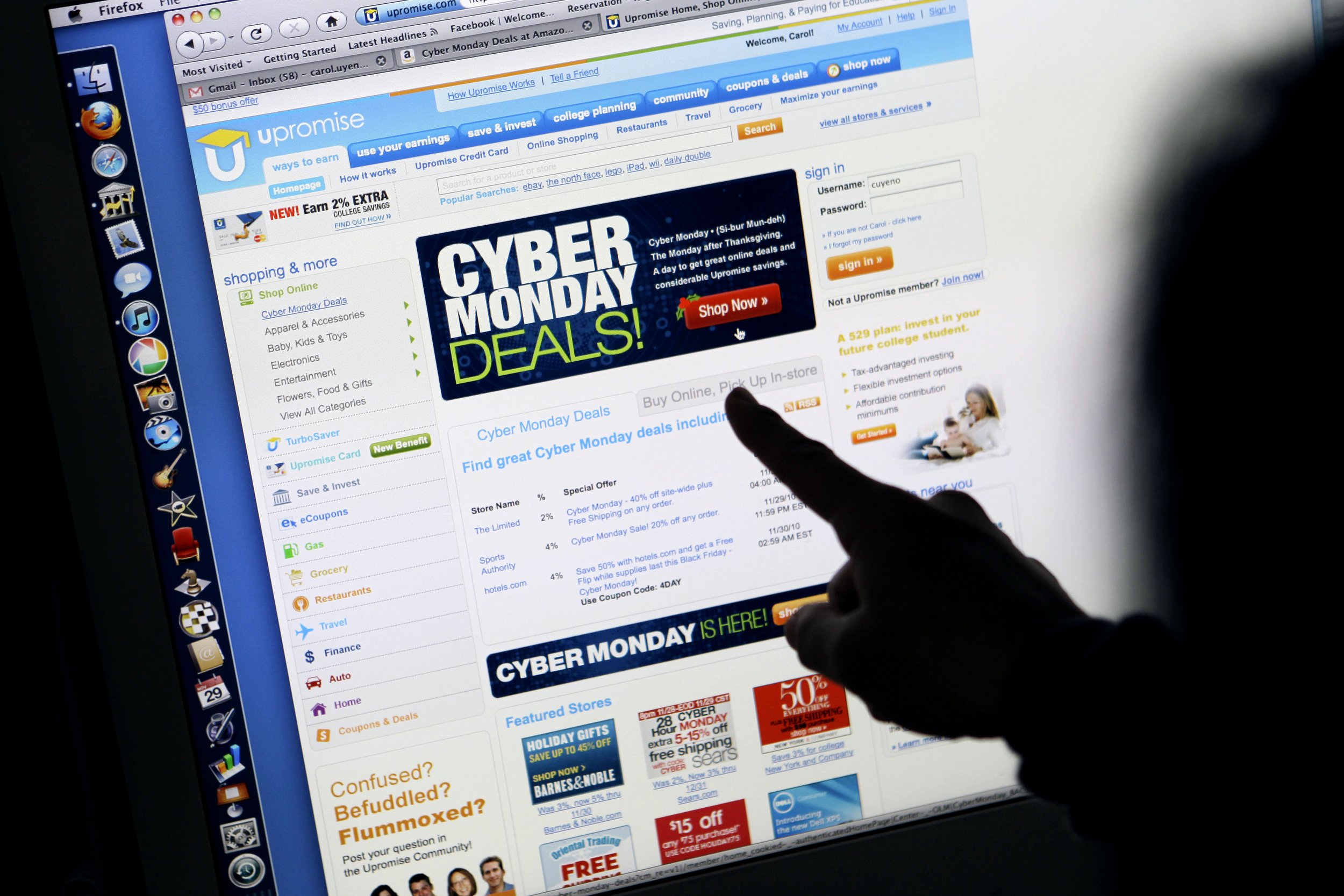Cyber Monday Rates A 'B' --- As In Billlions
Cyber Monday Marks The Year's Biggest Online Shopping Day, And One More Chance To Save On Gifts
By Haleluya Hadero // AP Business Writer
Consumers are scouring the internet for online deals as they begin to cap off the five-day post-Thanksgiving shopping bonanza with Cyber Monday.
Even though e-commerce is now part and parcel of our everyday lives and much of the holiday shopping season, Cyber Monday — a term coined back in 2005 by the National Retail Federation — continues to be the biggest online shopping day of the year, thanks to the deals and the hype the industry has created to fuel it.
Adobe Analytics, which tracks online shopping, expects consumers to spend between $12.0 billion and $12.4 billion on Monday, making it the biggest online shopping day of all time.
In fact, spending did indeed reach $12.4 billion, per Adobe Analytics—up 9.4% year-over-year (YoY), and above the company's projections, according to Insider Intelligence. Shoppers spent $15.7 million every minute during the sale's peak hour, between 10:00pm and 11:00pm EST.
For several major retailers, the "Cyber Monday" sale is a days-long event that begins over the weekend. Amazon's, for example, kicked off on Saturday and runs through Monday. Target's two-day event began overnight on Sunday, while Arkansas-based Walmart kicked off its most recent discounts Sunday evening.
Consumer spending for Cyber Week — the five major shopping days between Thanksgiving and Cyber Monday — provides a strong indication on how much shoppers are willing to spend during the holiday season.
Shoppers have been resilient this year in the face of stubbornly high inflation, which recently reached its lowest point in more than two years yet remains painfully apparent in areas like auto and health insurance and some groceries, like beef and bread.
Economists, meanwhile, have cautioned strong spending is likely to wane in the coming months.
Stressed consumers are relying on savings to fuel their shopping and are facing more pressure from credit card debt, which has been on the rise along with delinquencies. They've also been embracing "Buy Now Pay Later" payment plans, which allow shoppers to make payments over time without - typically - charging interest.
The National Retail Federation expects holiday shoppers to spend more this year than last year. But the pace of spending will slow, it said, growing 3% to 4% compared to 5.4% in 2022.
A clear sense of consumer spending won't emerge until the government releases sales data for the holiday season, though preliminary data shows some good signs for the retail industry.
According to Adobe, shoppers spent a record $9.8 billion online Friday — marking a 7.5% jump from last year. Meanwhile, Salesforce, which also tracks online shopping, estimated that Black Friday online sales totaled $16.4 billion in the U.S. and $70.9 billion around the world. And Mastercard SpendingPulse, which tracks in-person and online spending across all payment forms, reported that overall Black Friday sales excluding automotive rose 2.5% from a year ago — a smaller but still notable jump compared to 2022's double-digit growth.
According to the firm, online sales rose 8.5%, while in-store purchases were up just 1.1%. Those numbers are not adjusted for inflation, which means that real sales in-stores could have dipped due to high prices.
Other data showed Black Friday saw some increases in-store traffic — with large crowds in stores nationwide feeling more similar to pre-pandemic days.
RetailNext, which measures real-time foot traffic in stores, reported that store traffic rose 2.1% on Friday. Sensormatic Solutions, which also tracks store traffic, saw a bigger increase — reporting a 4.6% jump in shopper visits on Black Friday compared to a year ago. That also marks a turnaround from an average decline in store traffic seen throughout 2023 to date, Sensormatic said.
Grant Gustafson, head of retail consulting and analytics at Sensormatic, said that this marked the most significant Black Friday increase that his organization has seen in recent memory.
"This is a really good barometer of what to expect for the remainder of the holiday season," Gustafson said. "The overall trend that we saw in traffic is a really positive sign for not only physical retail but also for e-comm retail — that the consumer is willing to spend when they find out (about significant sales)."
Electronics, clothing, toys, and jewelry were among the categories that saw the most growth this Black Friday, per Adobe. Health and beauty products as well as sporting goods also saw significant sales increases.
Retailers began offering holiday deals in October this year, continuing a trend that started during the COVID-19 pandemic and has been resurrected multiple times due to supply chain clogs or inflation woes. But many consumers waited to buy until Black Friday.
Mickey Chadha, retail expert and vice president at the credit rating agency Moody's, believes that discounts will likely be quite strong and continue in the coming days, primarily because inventory, especially in discretionary categories, remains higher than demand. But he said the deals likely won't be as good as last year, when retailers had more items on hand.
The investment bank Jefferies, which tracked 54 retailers during Black Friday, said Monday that it found that a majority of them offered flat discounts compared to last year. Still, Salesforce's data showed discount rates rose to 30% in the U.S. on Black Friday, enticing customers to buy.
"They're once again playing a game — and winning the game — of discount chicken, where they wait for retailers to discount to where they feel most comfortable," said Rob Garf, vice president and general manager of Retail at Salesforce. "And that's what's happening."
According to Adobe's stats, spending exceeded Black Friday during the weekend as consumers spent $10.3 billion to take advantage of discounts that have been higher than years past. On Thanksgiving Day, Adobe said shoppers had spent another $5.6 billion, up 5.5% compared to last year. That's nearly double the amount consumers spent online in 2017, showing the continued shift to online shopping during the gift-giving season.
The resale industry, which has grown in recent years, is also expected to be a significant part of the holiday shopping season. Salesforce predicts 17% of holiday gifts this year will come from resale markets like Facebook Marketplace or ThreadUp, as well as brands like Canada Goose, Patagonia, and Coach offering resale options on their sites for environmentally-conscious consumers or those who enjoy vintage offerings.
____
AP reporters Anne D'Innocenzio, Chris Rugaber and Wyatte Grantham-Philips contributed to this report.









